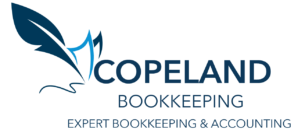
Cash flow problems are among the biggest concerns for construction businesses, large or small. Without healthy cash flow, even the most skilled contractor or builder may face financial difficulties that stall growth, damage reputation, or worse, jeopardize the entire operation. Fortunately, pricing your construction services thoughtfully and strategically can greatly minimize these risks. Here’s how to price your construction services effectively, keeping your cash flow healthy and sustainable.
1. Know Your Numbers: Understand Costs Thoroughly
Accurate pricing begins with thoroughly understanding your actual costs. These include:
- Direct Costs: Materials, labor, subcontractors, permits, and equipment rentals.
- Indirect Costs: Overhead expenses, such as office rent, utilities, insurance, administrative salaries, accounting, and marketing.
Before pricing any job, ensure you have accounted for every potential cost involved in delivering your services.
2. Use Detailed Job Costing
Effective job costing is essential. By tracking and evaluating costs on a project-by-project basis, you gain clarity on your expenses and profitability. Detailed job costing helps you:
- Detect which types of projects deliver the highest margins.
- Uncover hidden or unexpected costs that drain profit.
- Improve accuracy when bidding for future jobs.
Implementing a robust job-costing system or software will allow for easier analysis, enabling smarter pricing decisions.
3. Price for Profit, Not Just Survival
Many construction businesses price their services merely to stay competitive or win bids, which can be a dangerous game. Instead, factor in your desired profit margins upfront. Consider industry benchmarks, your operational expenses, and your target net profit when determining your markup percentage.
Aim to strike a balance between competitive rates and profitable pricing. It’s better to take fewer, more profitable jobs than to find yourself overwhelmed with low-margin projects that strain cash flow.
4. Factor in Payment Terms and Cash Flow Cycles
Your cash flow depends not only on how much you charge but also on how quickly you collect payments. When pricing, take into account your payment schedules:
- Negotiate upfront deposits or progress payments to minimize upfront out-of-pocket expenses.
- Offer incentives for early or prompt payment.
- Establish clear payment terms and penalties for late payments to encourage timely settlements.
Improving the collection timeline reduces your reliance on debt or your personal reserves to finance operations, thereby protecting cash flow.
5. Consider Market Conditions and Client Expectations
Pricing your construction services effectively also means understanding market conditions. Consider factors such as:
- Demand for your services.
- Competitor pricing strategies.
- Seasonal fluctuations in your area or niche.
Be flexible and adjust pricing strategies based on market shifts while maintaining clear value and quality. Educate clients about the value you deliver beyond the lowest price, such as superior workmanship, reliability, and quality materials.
6. Build a Contingency Buffer into Your Pricing
Construction projects frequently encounter unforeseen circumstances that add extra costs—like weather delays, material price increases, or unexpected repairs. When pricing your services, build in a contingency buffer (typically 5-10% of the total bid) to cushion these surprises.
A contingency buffer ensures you’re protected and not forced to dip into profits or personal cash reserves, safeguarding your cash flow even when unexpected expenses arise.
7. Regularly Review and Adjust Your Pricing
Pricing isn’t a “set it and forget it” endeavor. Regularly review your pricing strategies to ensure they’re still aligned with your costs, profit goals, and market conditions. Conduct quarterly or annual reviews of completed projects, comparing projected costs with actual costs to continuously fine-tune your pricing structure.
Conclusion
Smart pricing is a crucial skill for construction businesses seeking sustainability and long-term growth. Understanding your true costs, pricing to cover expenses and profit, managing payment terms wisely, factoring in market conditions, and building contingencies are all powerful methods to maintain strong and reliable cash flow. By making pricing decisions thoughtfully and proactively, you position your business to thrive rather than merely survive—protecting your cash flow and paving the way for consistent success.
